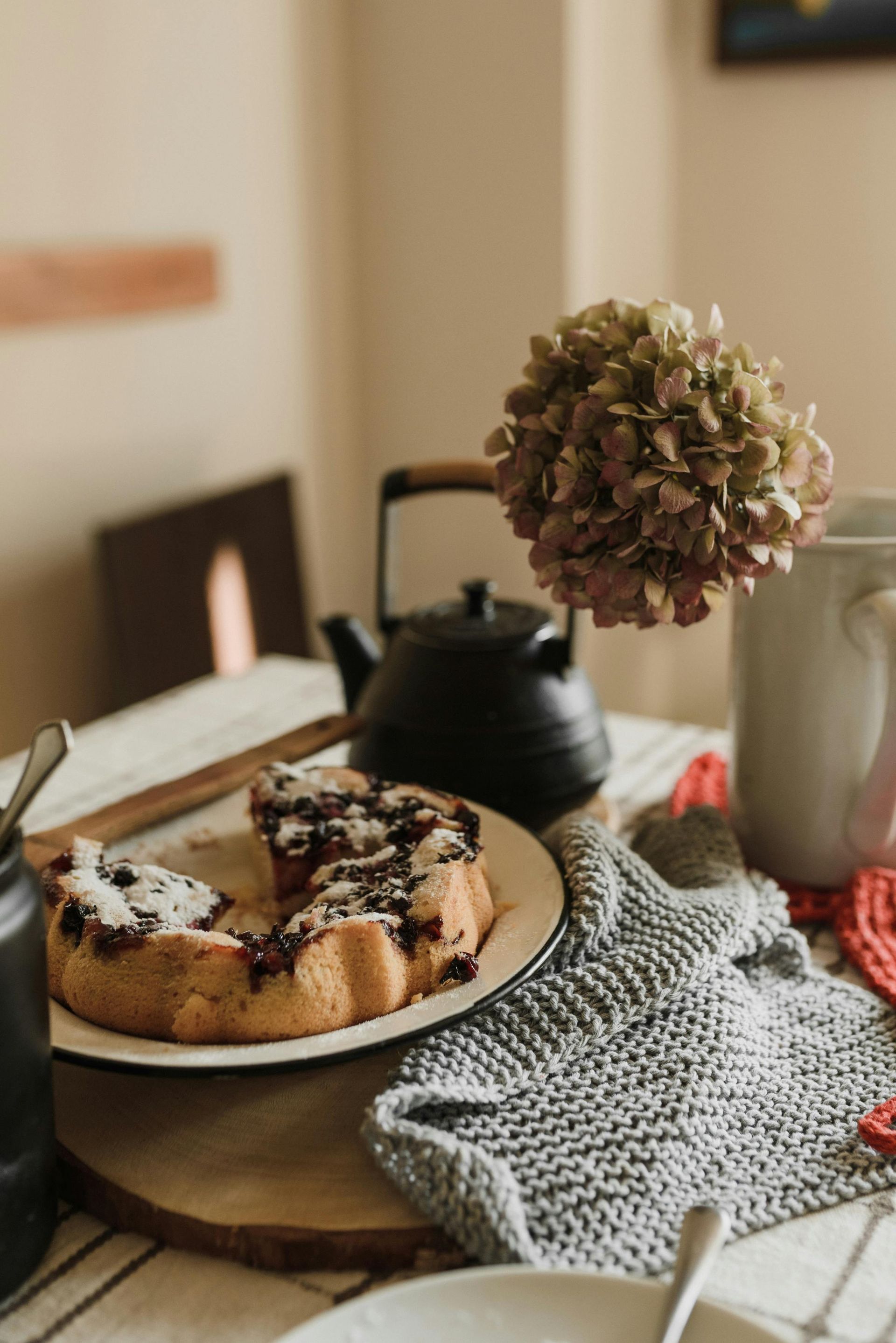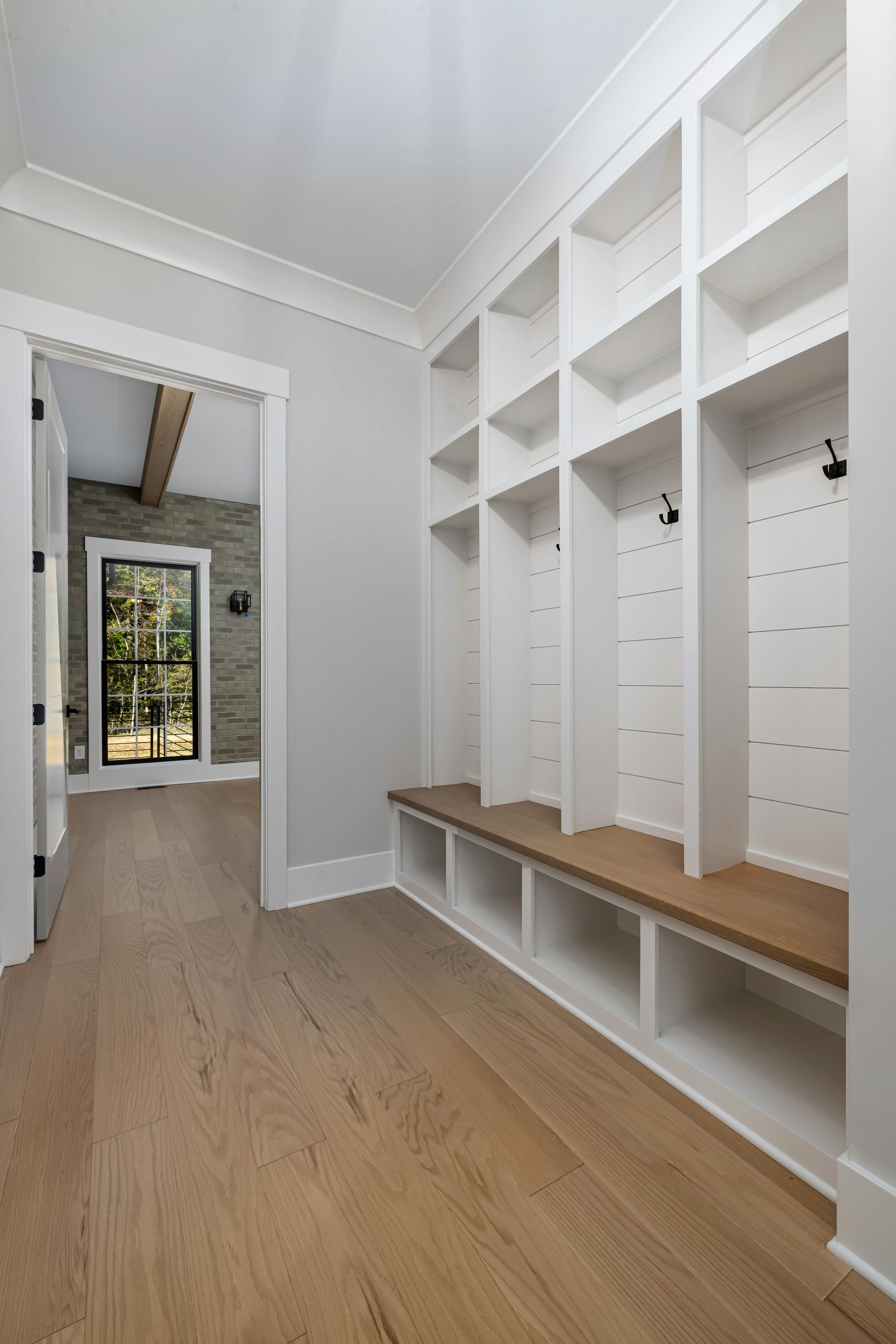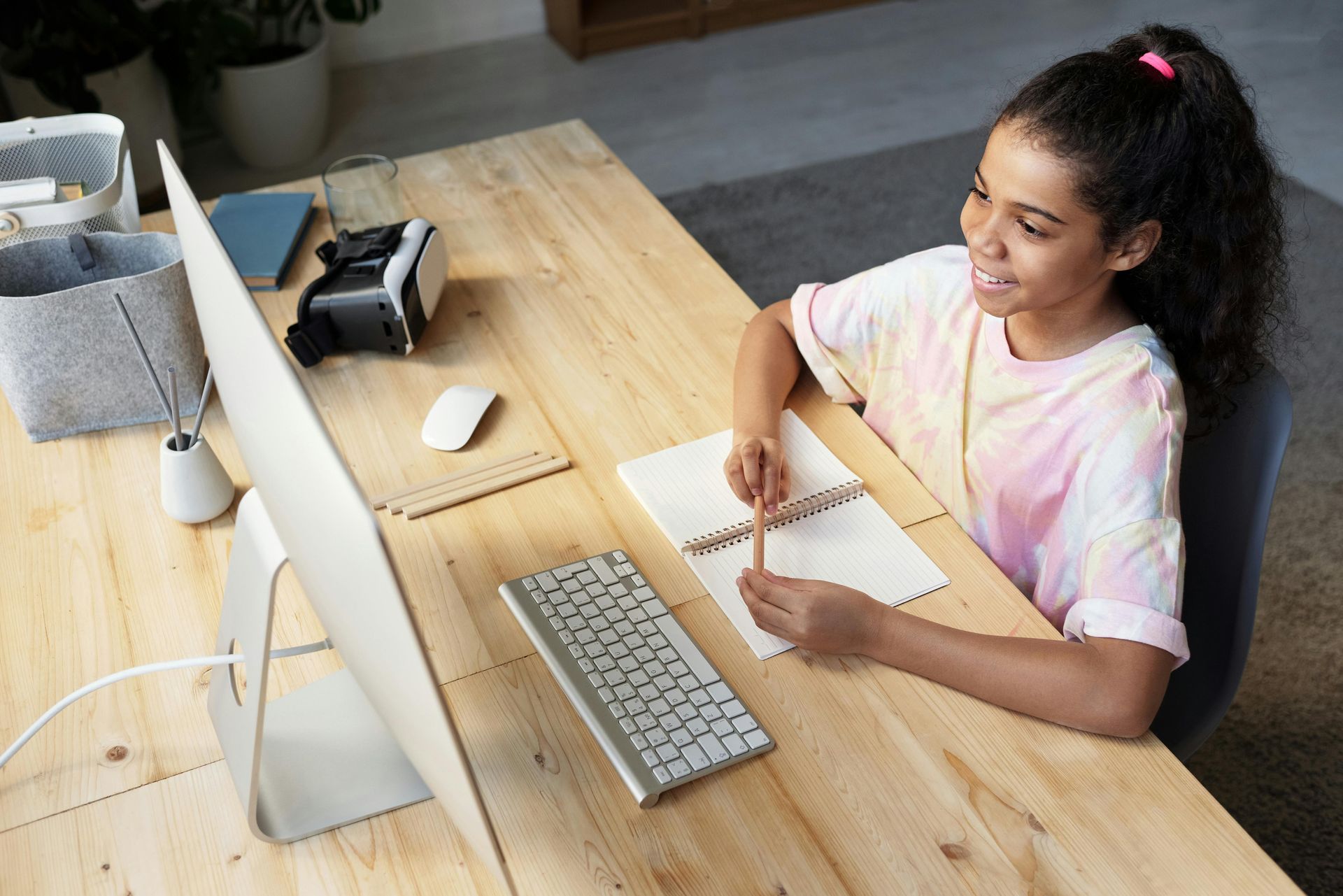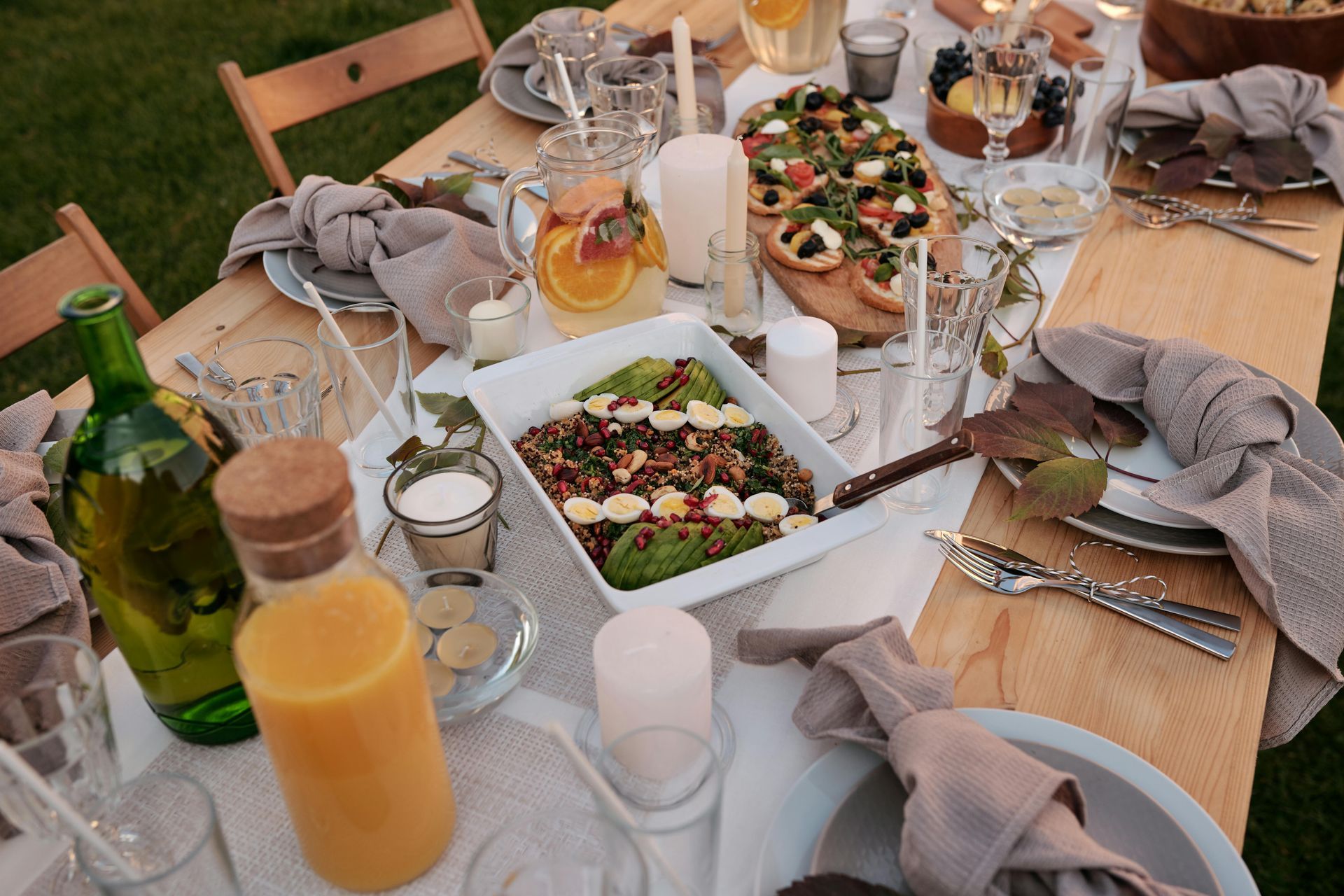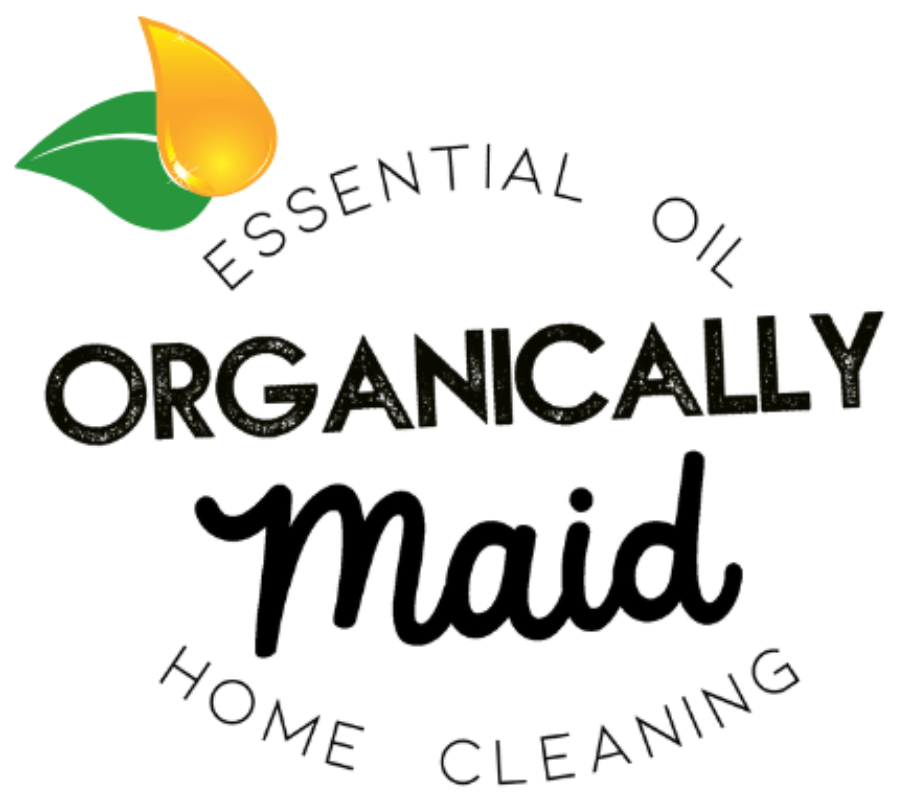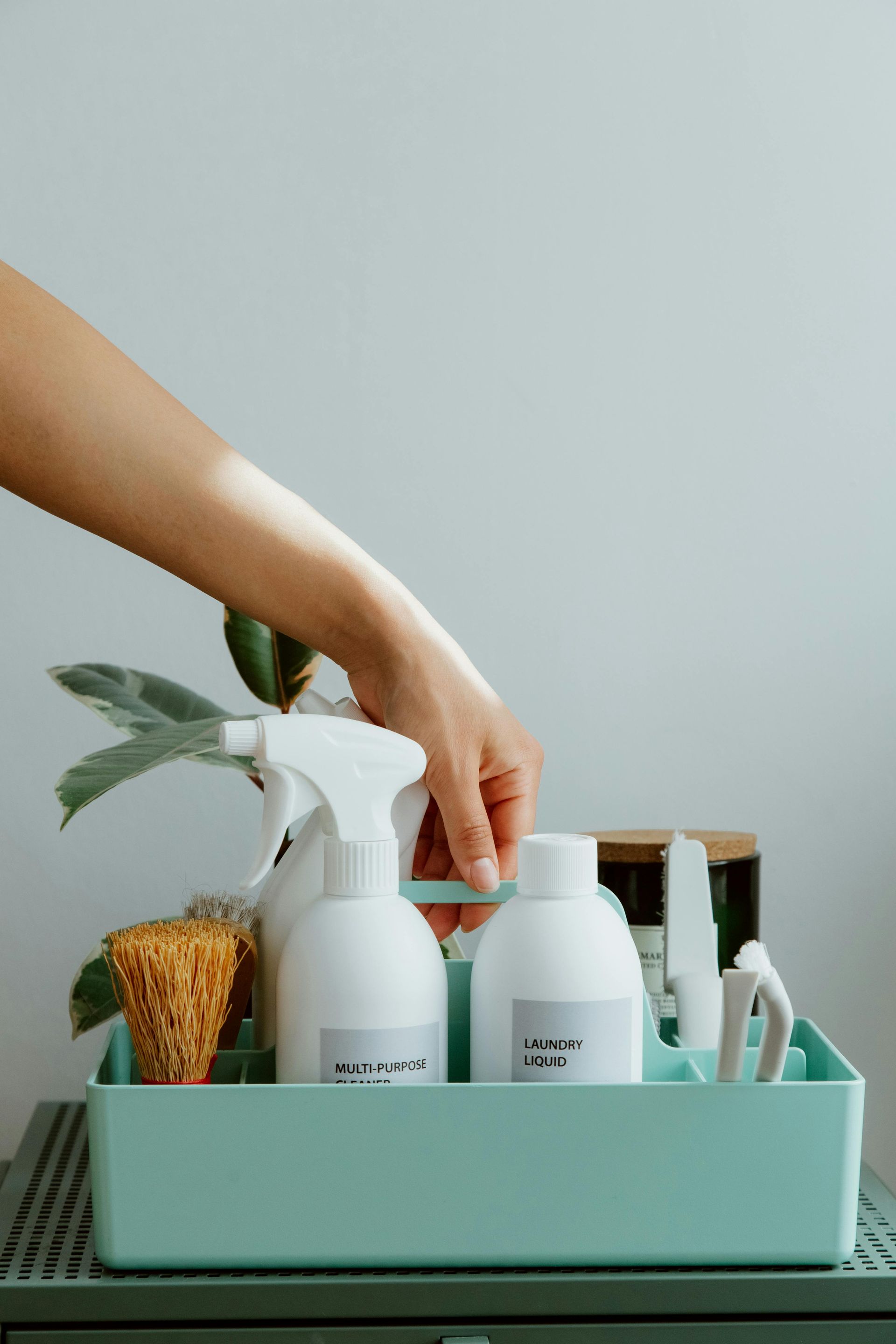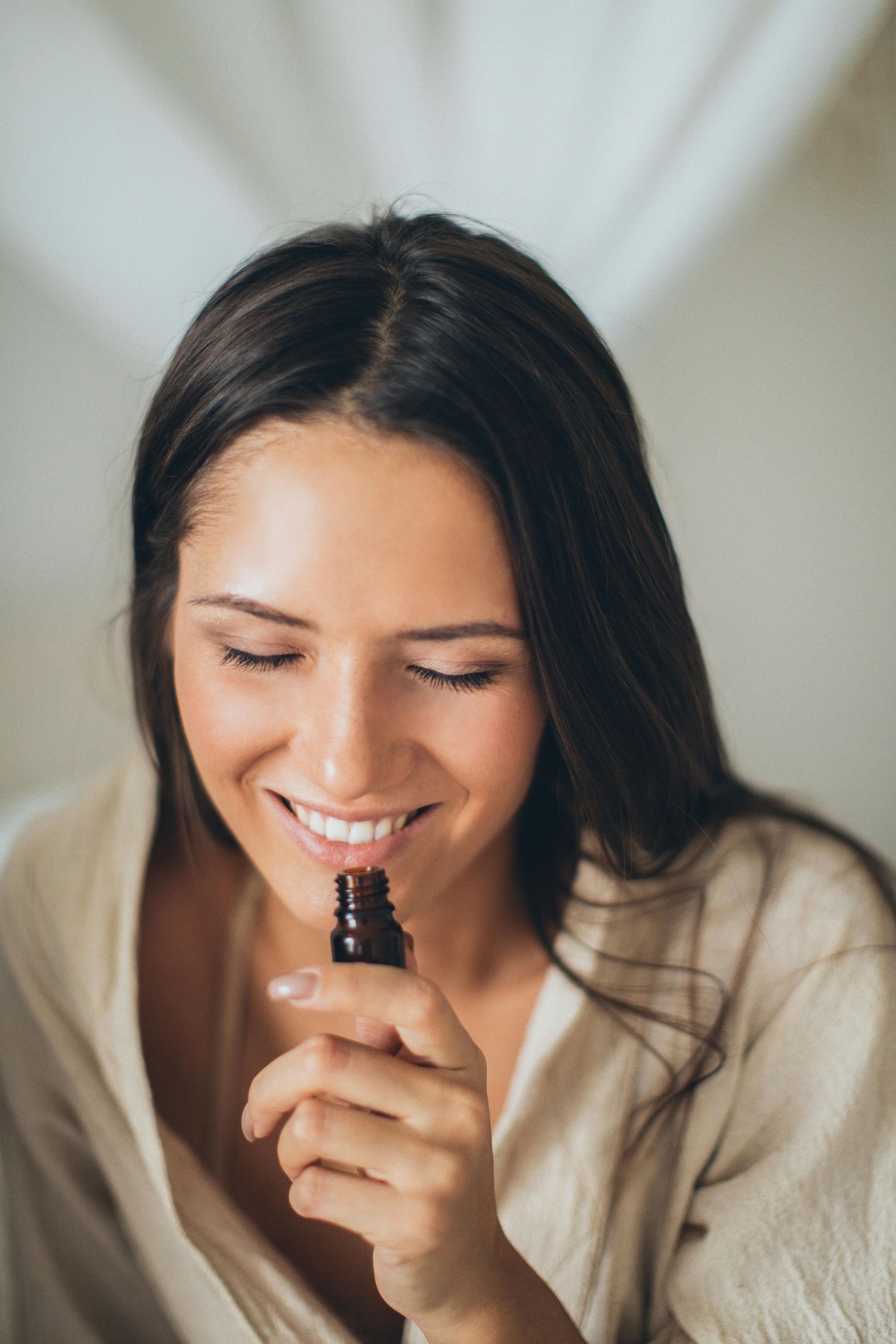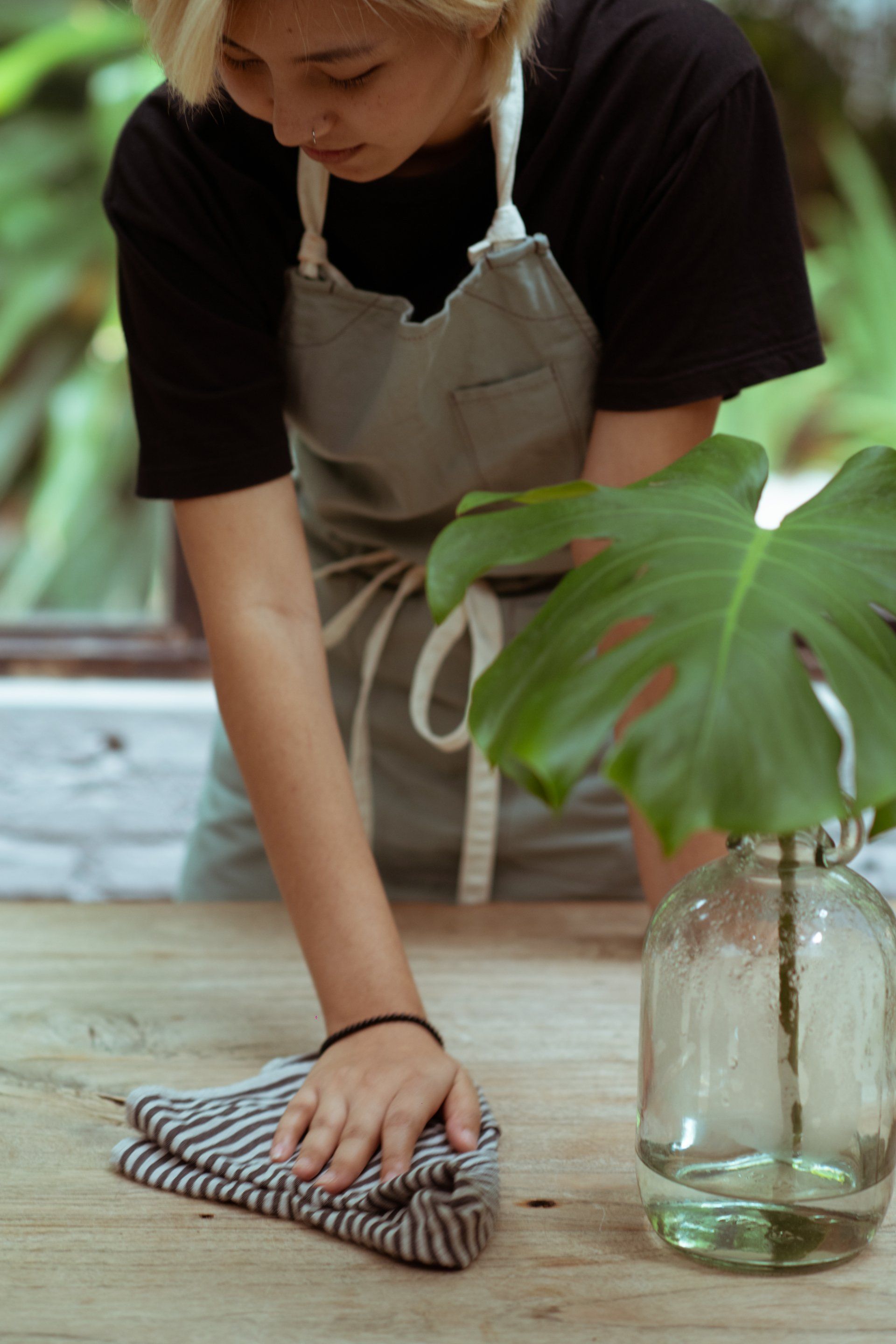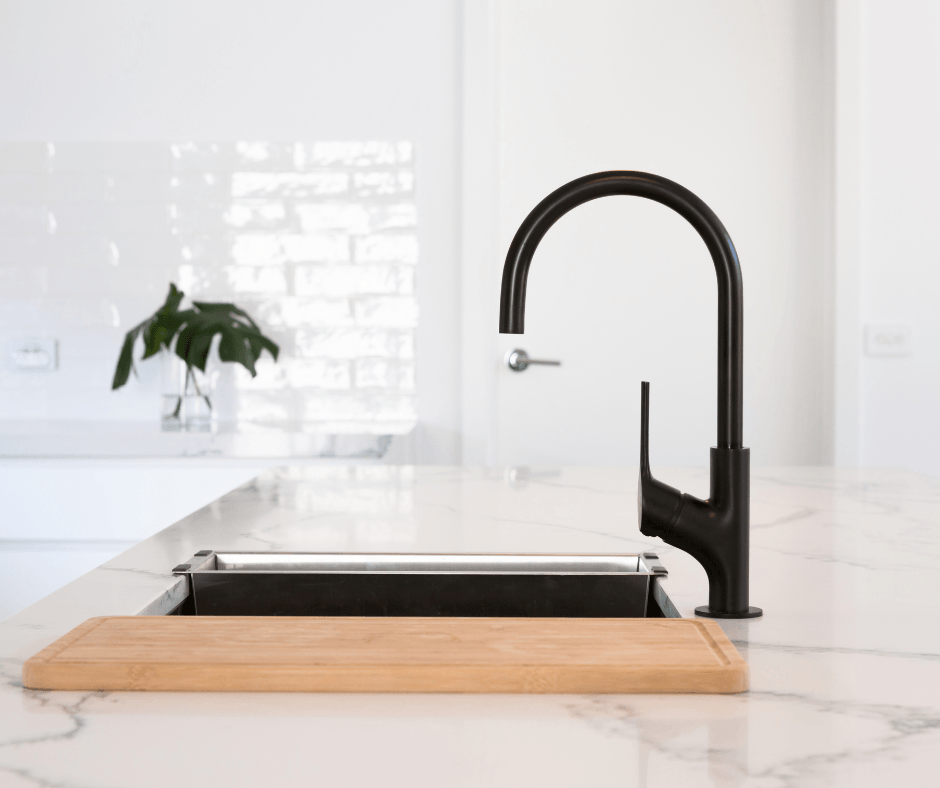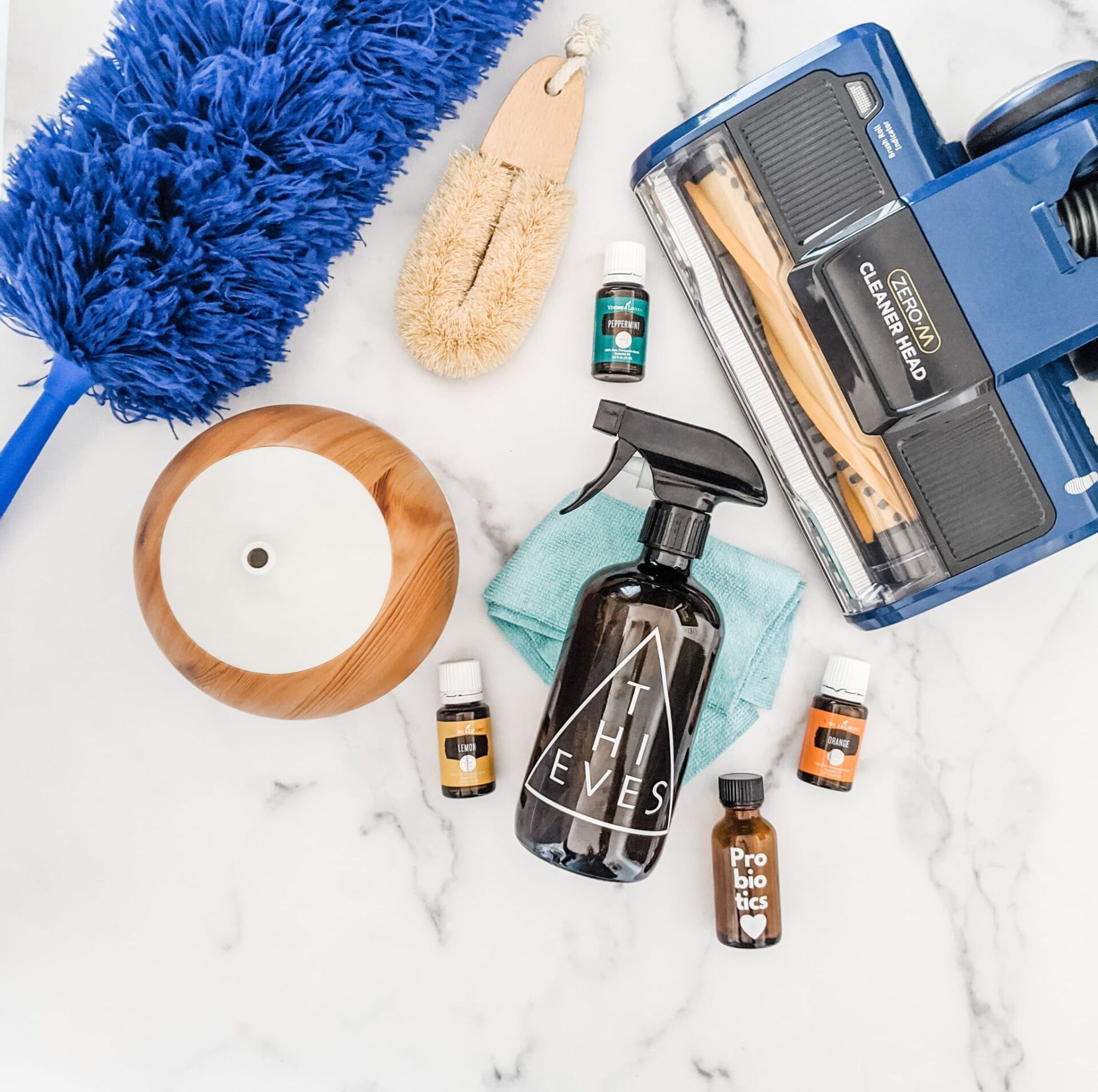How to Properly Clean and Disinfect Cutting Boards
The Natural Way
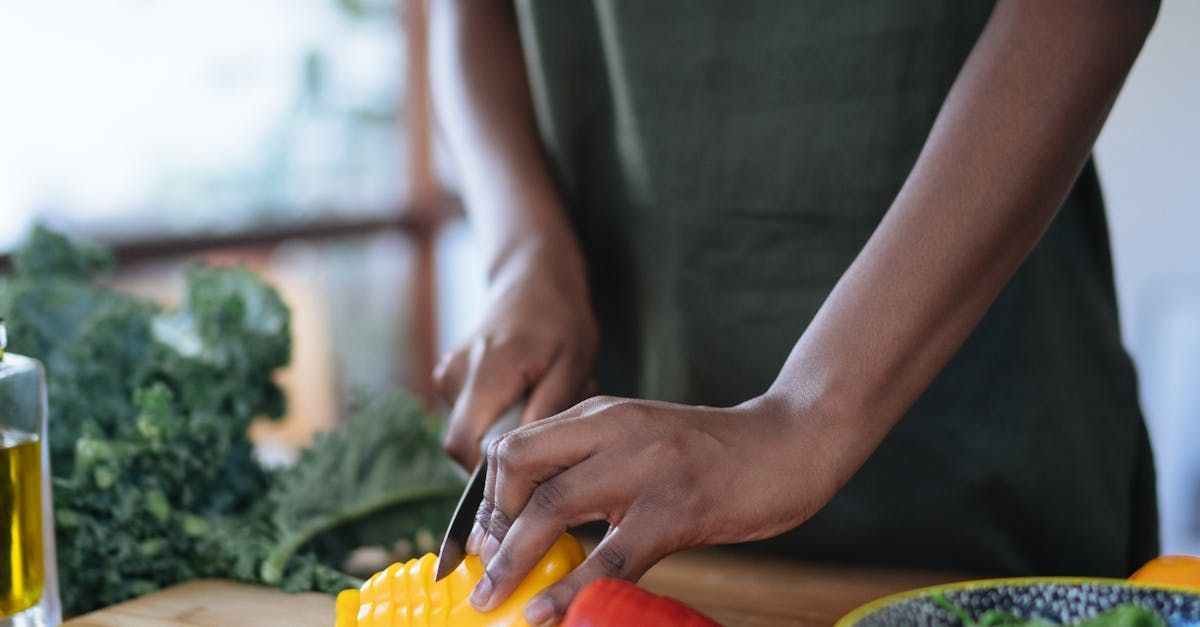
Cutting boards are essential kitchen tools, but they can easily become breeding grounds for bacteria if not cleaned and disinfected properly. Whether you're chopping vegetables or slicing meat, it's important to maintain cleanliness to prevent cross-contamination. Using organic cleaning methods is not only effective but also safe for you and your family. Here’s how to properly clean and disinfect cutting boards using natural, non-toxic ingredients.
Cleaning Wooden Cutting Boards
Wooden cutting boards are popular because they’re durable and gentle on knives. However, they require a bit more care to prevent bacteria from lingering in the grooves and cracks.
- Step 1: Scrape Off Debris
After each use, scrape off any food particles using a scraper or the back of a knife. This prevents residue from being absorbed into the wood. - Step 2: Wash with Warm Soapy Water
Use a sponge or cloth with warm water and castile soap to wash the board. Avoid submerging the board in water, as this can cause the wood to warp. Rinse thoroughly with warm water. - Step 3: Disinfect with Vinegar
Once your board is clean, spray it with white vinegar. Vinegar is a natural disinfectant that helps eliminate bacteria without harsh chemicals. Let the vinegar sit for a few minutes before wiping it away with a clean cloth. - Step 4: Deodorize with Lemon
To remove any lingering odors, rub a lemon half over the surface of the board. The natural acidity in lemon helps deodorize and further disinfect. You can also sprinkle a bit of coarse salt onto the board before scrubbing with the lemon for extra cleaning power. - Step 5: Condition with Oil
Wooden cutting boards need regular conditioning to prevent drying and cracking. Once the board is completely dry, apply a thin layer of food-grade mineral oil or coconut oil. Let it soak in, then wipe off any excess with a clean cloth.
Cleaning Plastic Cutting Boards
Plastic cutting boards are typically easier to clean, but they can still harbor bacteria, especially in knife cuts and grooves.
- Step 1: Scrub with Soap and Water
After each use, scrub the cutting board with hot, soapy water. Use a brush to get into the grooves created by knife marks. Rinse thoroughly with hot water. - Step 2: Disinfect with Hydrogen Peroxide
Hydrogen peroxide is a powerful natural disinfectant. Pour a small amount of 3% hydrogen peroxide onto the surface of the plastic cutting board and spread it evenly using a clean cloth. Let it sit for a few minutes to kill any bacteria, then rinse with hot water. - Step 3: Baking Soda Paste for Stains
If your plastic cutting board has stains, make a paste of baking soda and water. Rub the paste onto the stained areas and let it sit for 10-15 minutes before scrubbing. Baking soda’s abrasive properties help lift stains without scratching the surface. - Step 4: Deep Cleaning with Vinegar and Lemon
For regular deep cleaning, soak the cutting board in a mixture of equal parts white vinegar and water. Let it soak for 10-15 minutes, then rinse thoroughly. You can also scrub the board with half a lemon to eliminate odors and provide additional cleaning.
Cleaning Bamboo Cutting Boards
Bamboo cutting boards are similar to wooden ones but are more resistant to moisture and less prone to cracking. They still require regular cleaning to maintain their condition.
- Step 1: Scrape Off Debris
Just like with wooden boards, scrape off any food remnants to prevent bacteria buildup. - Step 2: Wash with Warm Water and Soap
Use a gentle dish soap and warm water to clean the bamboo board. Avoid soaking it in water for too long, as bamboo can absorb moisture and swell. - Step 3: Disinfect with Vinegar
Spray the bamboo board with white vinegar to naturally disinfect the surface. Let the vinegar sit for a few minutes, then wipe with a clean cloth. - Step 4: Deodorize with Baking Soda
To remove any stubborn odors, sprinkle baking soda over the board and scrub gently with a damp cloth. Rinse with warm water and allow the board to air dry. - Step 5: Condition with Oil
Keep your bamboo cutting board from drying out by conditioning it with food-safe mineral oil or beeswax. Rub a thin layer of oil over the board, let it soak in, and wipe off any excess.
Tips for Cross-Contamination Prevention
- Use Separate Cutting Boards
To avoid cross-contamination, use separate cutting boards for different types of food. Dedicate one board for raw meats and another for vegetables or fruits. - Disinfect After Raw Meat Use
After cutting raw meat, poultry, or fish, it’s essential to disinfect your cutting board immediately. Use a stronger natural disinfectant like hydrogen peroxide or undiluted white vinegar to ensure any bacteria are killed. - Let Boards Air Dry
After washing and disinfecting, always allow your cutting boards to air dry completely before storing. Bacteria thrive in moist environments, so make sure your board is dry to prevent mold and bacterial growth.
Proper cleaning and disinfecting of cutting boards can greatly reduce the risk of food borne illness and keep your kitchen safe. By using natural cleaning methods, you protect your family from exposure to harmful chemicals while maintaining a clean and healthy home environment.
The recommendations and recipes provided on the Organically Maid Blog are intended for informational purposes only. Please use caution and consult with a professional if you have any concerns or allergies. Organically Maid is not liable for any adverse effects or damages that may result from following the recommendations or recipes shared on this blog. Always follow manufacturer's recommendations and proceed at your own risk.
Blog
